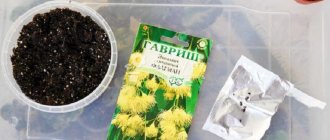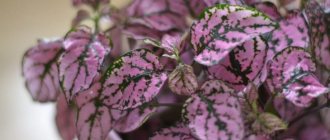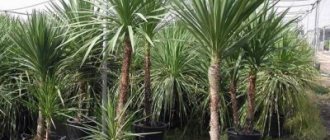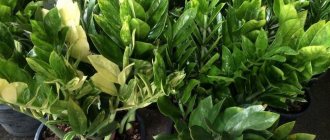Among the many bonsai and coniferous plants grown at home, eucalyptus stands out for its rarity and valuable qualities. This plant is highly valued by gardeners for its unusual foliage and crown, as well as for its unique aroma, which can completely change the atmosphere in the room. Moreover, this refers not only to the plant’s ability to release phytoncides into the air. Homemade eucalyptus can become the highlight of any interior. It has a spectacular appearance, but at the same time it is demanding in terms of care and maintenance conditions.
Description and characteristics of the plant
Lemon eucalyptus (Eucalyptus Citriodora) is an amazing evergreen tree of the Myrtaceae family, which is considered to be native to Eastern Australia. Prefers to grow in warm climates. Under natural growing conditions it can reach 100 m in height. When kept indoors, the height of the plant can be easily adjusted with timely pruning and pinching. The leaves are quite dense, arranged in a spiral on the stems. They have an oval-lanceolate shape, reach 16 cm in length, and no more than 2 cm in width.
Indoor lemon eucalyptus
The bark of a eucalyptus tree is white with red-brown, sometimes orange, streaks. There are small growths at the bottom of the trunk.
Eucalyptus flower in a pot, Blue Baby variety
Features of culture
Indoor eucalyptus is a small tree with a pyramid-shaped crown. It grows very slowly; a mature crop reaches a height of one hundred and fifty centimeters. The eucalyptus houseplant is slightly smaller in size.
The foliage has an unusual green color with a blue tint. The surface of the leaf plates is glossy and shimmers in the sun. In an indoor eucalyptus in a pot, you can notice changes in foliage that occur over time.
While young leaves have a soft texture and strong aroma, mature leaves become denser and less fragrant. The buds of the plant are formed one by one, after they wither, fruits appear in the form of boxes.
The aroma comes from the presence of essential oils. They are contained in the plant in huge quantities. In addition, in room conditions, eucalyptus releases substances called phytoncides. They have an antibacterial effect, purifying the air around us. In medicine, the plant is used in the manufacture of medicines used for diseases of the respiratory system.
Agrotechnical features
Not all species can be planted at home. Indoor eucalyptus Gunny and indoor eucalyptus Lemon are suitable for this purpose. In a specialized nursery you can purchase seedlings of these varieties or grow them from seeds. The second method is long, but the seeds have good germination.
It is best to plant planting material in clay pots. They contain sand and soil in equal proportions. Seeds are sown on moist soil. The pots are placed in a prepared place with a temperature of eighteen degrees Celsius.
Watering begins on the fifth day after sowing, when the first shoots hatch. When they reach a height of three centimeters, a pick is made. Watering also begins on the fifth day. The seedlings can be placed in a permanent place in the pot after twenty days.
Varieties suitable for home cultivation
How to grow a lemon tree from a seed at home
There are many types of eucalyptus (more than 500), but only a few of them are suitable for growing as an ornamental crop. The most popular include:
- globular. It stands out for its beautiful, pyramidal crown and bluish-blue leaves, on the outside of which there is a silvery coating;
- Gunny. Young plants have round, gray-green leaves, which become oblong with a pointed tip as the tree matures;
- Blue baby. Belongs to the dwarf species of eucalyptus. Distinguished by small gray-blue petals;
- fig leaf. It stands out among other varieties due to its rounded small leaves;
- silver or ash. The main difference is the gray oval or round leaves;
- Populus is an ornamental eucalyptus that is capable of forming small berries.
Important! These varieties are not intended for planting in open ground; they can only be grown indoors.
There is also a very beautiful species, the rainbow eucalyptus, which has bark of various colors similar to a rainbow, but it is not suitable for growing as a houseplant.
Varieties of plants in pots on the windowsill
Spreading
The homeland of this tree is Australia and all the islands adjacent to it. It is there that you can still find any of the varieties, and more than 500 species grow there. In Australia, this medicinal plant is a forest-forming plant and grows well both in forests and lowlands, as well as on ordinary streets and private plots.
Now eucalyptus has long escaped the territory of Australia and is growing in a number of other countries: India, France, Africa, Portugal, Greece, China, Israel, Russia and so on. But there is one small difference: in the above countries only low-growing analogues grow. The fact is that for rapid growth a tree needs increased moisture.
As for Russia, eucalyptus grows very slowly here, and some species do not take root at all and die. The best place to plant this tree is Sochi.
Medicinal properties
Indoor eucalyptus releases phytoncides that cleanse the air of viruses and bacteria.
How to grow abutilon flower from seeds at home
The leaves contain essential oil that has powerful antibacterial and antiviral properties. The leaves of the plant are used to prepare oils, infusions and alcohol tinctures.
Eucalyptus is a home plant that is often used to treat abscesses, furunculosis, purulent mastitis and various ulcers. Decoctions of eucalyptus leaves can be used for inhalation for acute respiratory infections and gargling for throat diseases and various problems in the oral cavity.
Note! The plant will only be beneficial if you apply eucalyptus leaves and products prepared from them externally in the form of lotions, ointments or rinses. Ingestion may cause poisoning.
Bright green eucalyptus leaves
For your information! Eucalyptus was first grown in Australia at the end of the 18th century. The eucalyptus tree came to Russia thanks to the botanist A. N. Krasnov in the early 80s of the 19th century. It took breeders more than 50 years for it to take root.
Home care for eucalyptus as a houseplant
Callistemon lemon: examples of home care
Lemon eucalyptus care at home requires simple care. It consists of ensuring the correct temperature conditions, timely watering, applying the necessary fertilizing, annual replanting and periodic pruning.
Temperature
In summer, the most suitable temperature for eucalyptus is considered to be within 20-25 °C, in winter - 12-16 °C. The tree needs a fresh flow of air, but during the ventilation period in frosty weather it needs to be protected from cold drafts.
Lighting
It is best to place lemon eucalyptus in a pot at home in well-lit places, for example, it could be the windowsill of south, south-east or south-west windows. If all the windows of the apartment face north, it is necessary to use additional lighting, since a lack of light will lead to slow growth of the flower.
In summer, when the weather is good outside, the flower can be taken out onto the balcony or terrace. During heavy rain or wind, it must be taken back to the apartment. With the arrival of autumn, the tree must be returned to the room again.
Lush green bush
Watering
In summer, you need to make sure that the soil in the pot is always moist; you should water the plant once every 2-3 days with a small amount of water. In winter, eucalyptus needs to be watered as the top layer of soil dries out - once every 7-10 days.
Important! For irrigation, use only purified water at room temperature.
Eucalyptus plant species Populus
Humidity
In the summer, indoor eucalyptus needs moist air, but since the plant cannot be sprayed, you can maintain the required level of humidity by placing the pot in a pan of water. In this case, the tree will take as much water as it needs.
Priming
For proper development and good growth, eucalyptus must be planted in soil rich in mineral components. You can buy a ready-made substrate, or you can prepare it at home. The soil composition should include: humus (20%), turf (40%), river sand (20%) and dry peat (20%). The soil should be loose and well drained.
Feeding
During the active growing season, indoor eucalyptus must be fertilized periodically. Complex mineral fertilizers and organic matter can be used as fertilizers. Feeding should be done once every 14-20 days. Fertilizing is carried out immediately after watering. The amount of fertilizer applied is calculated according to the instructions.
Important! You should not fertilize the flower in winter during the dormant period. In addition, it is not recommended to fertilize immediately after transplantation, or if the flower is sick or damaged by pests.
Pruning at home
If you do not trim the shoots, the tree will become very tall. To form a lush, beautiful crown, annual spring pruning is carried out. During the pruning process, the central trunk is shortened to the required height. After pruning, the eucalyptus will produce young shoots, forming a lush bush. Young shoots are pinched, this is necessary for the formation of young shoots. Using this method, you can form the crown of a plant of the required size and shape. Mature plants need to have their roots trimmed during transplantation, this will help limit the trunk from stretching in height.
How to propagate yourself
You can grow lemon eucalyptus from seeds, as well as by rooting apical cuttings.
Germination of seeds
How to grow lemon eucalyptus using seeds:
- Place a drainage layer on the bottom of the planting container and soil on top.
- Pour lemon eucalyptus seeds Ozone, lightly pressing them into the ground, water with warm water.
- Cover the container with glass or film and place in a warm place for germination.
- Every day, plantings need to be ventilated, removing the cover and removing accumulated condensation.
- The first shoots can be seen after 7-10 days. When the first shoots hatch, the cover must be removed.
- When 3-4 true leaves appear, pick them out in separate small pots.
- When the young plants grow to a height of 15-20 cm, transplant them into a large pot.
Grown seedling
Rooting cuttings
Step-by-step process of rooting cuttings:
- From an adult plant, several young shoots 10-12 cm long are cut off, and all side leaves are removed.
- The cut is treated with a root growth stimulator.
- The sprouts are planted in prepared soil.
- Cover with film and place in a warm place.
- Rooting will take 3-4 weeks.
- When the cutting takes small roots, it is transplanted to a permanent place.
Growing lemon eucalyptus from seeds
The culture can be propagated by cuttings and seed method. The permissible sowing time is quite long: from mid-February to the end of June. But planting from the third ten days of February to the second ten days of April is considered optimal.
For cultivation, you should use turf soil with sand in equal proportions, which must be prepared in advance. For sowing, use standard containers with drainage, such as ordinary flower pots, or cups for seedlings with stands.
Preparing to plant lemon eucalyptus seeds
Seeds are planted to a depth of 5 millimeters, 2-3 pieces per container. After sowing, it is recommended to cover the pots with plastic wrap or a bag - this will help retain moisture in the soil. Check the soil surface daily and moisten when dry.
Eucalyptus seeds germinate quite quickly, but provided that the room temperature is kept between 23-25 degrees Celsius. The first shoots can be noticed within a week after sowing, but pipping can take up to three months.
Eucalyptus seeds germinate quickly and seedlings need to be picked
This plant needs picking. It is performed when the first 2 true leaves appear. Seedlings are planted one at a time in a container with a diameter of 7 centimeters. Before planting, prepare the soil by mixing turf soil, humus and sand in a one to one ratio.
Transfer
During the period of active growth, young eucalyptus requires an annual transplant. The most suitable time for this is spring, when new leaves are actively growing.
Note! Mature plants that are more than three years old are replanted every three years using the transshipment method.
The transplant is done as follows:
- Eucalyptus is watered in advance to make it easier to remove from the old pot.
- Prepare a larger pot.
- A drainage about 5 cm thick is made at the bottom of the container, and a small layer of earth is poured on top.
- The tree is removed from the previous pot, lightly shaking off the old soil from the roots.
- Inspect the entire root system, cutting off all damaged and rotten roots.
- The cut areas are sprinkled with charcoal or activated carbon.
- The plant is placed vertically in the pot and soil is added.
- Water with warm purified water.
An overgrown plant needs a new, spacious pot so that the roots do not suffer due to cramped space. After transplanting or planting, the plant goes through an adaptation period, so it should be removed away from bright sunlight and not fertilized for one week.
Transplantation by transshipment method
Possible problems during cultivation
Improper care can cause disease and even death of the plant. If the process of caring for eucalyptus is disrupted, the following problems may appear:
- in case of insufficient lighting, the stems will become very tall, the leaves will decrease in size and change their color to a less saturated color. To solve the problem, it is necessary to move the flower to a more illuminated place or organize additional lighting, especially in winter, when daylight hours are short. It is also worth doing in the summer in cloudy weather;
- If there is insufficient watering, the leaves on the eucalyptus will dry out and fall off. In this case, it is necessary to adjust the watering regime;
- direct sunlight on the leaves and insufficient watering can cause burns. During the midday heat, it is worth shading eucalyptus and moisturizing it in a timely manner;
- Excessive moisture can lead to stagnation of water in the soil, rotting of the root system, softness and falling leaves.
Diseases and pests
Due to the high content of phytoncides, lemon eucalyptus is highly resistant to various types of diseases. Also, because of the smell, many pests avoid it. But if the care rules are not followed, spider mites or scale insects may appear. You can fight them with a damp sponge dipped in soapy water. If such actions do not lead to anything, you need to treat the plant with insecticides.
Lemon eucalyptus is a fragrant evergreen that is great for indoor growing and requires little care. It is easy to grow eucalyptus at home, because the rules of care are extremely simple. This flower can create a pleasant aroma in the room and purify the air, as well as quickly cure winter colds.
Pests
Insect pests can attack eucalyptus trees and bushes. Any illness or weakness is an open invitation for pests to invade. Here are several types of pests and tips on how to deal with them.
- Mealybug - the leaves are covered with a white coating similar to cotton wool. Eucalyptus grows slowly. It is necessary to spray with a solution of soap with alcohol, tincture of garlic or calendula. Recommended products include Actellik and Fitoverm.
- Spider mite - translucent web on foliage, yellowing, falling, cracks on the surface. The plant must be washed thoroughly (in the shower), and then, every week, use an ultraviolet lamp for several minutes to treat and prevent spider mites. From chemistry, you can use sulfur powders, Ftoverm and Actelitik.
- Aphids - look like sticky yellow droplets on the leaves; they curl and become deformed. An infusion of nettle, a decoction of rhubarb leaves, wormwood, a soap solution, an infusion of tobacco and dandelion, onions, marigolds, yarrow, tansy, or dusting with wood ash will help get rid of this pest. Sulfur powders, treatment with green potassium soap, Decis, Actellik, Fitoverm will also help.
Pests on eucalyptus











